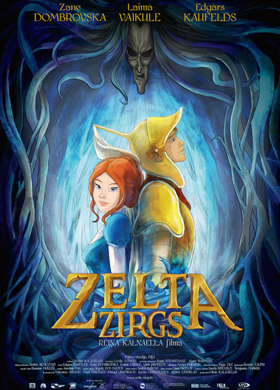Riga is big, imposing and in many places not quite right. At times it elicits curses, and at times one is simply happy to have met and become acquainted with this city. The film’s characters – an experienced photographer, a young musician, a city planner and many others have very diverse feelings on Riga.
Monthly Archive for June, 2010
Page 2 of 3
Riga is big, imposing and in many places not quite right. At times it elicits curses, and at times one is simply happy to have met and become acquainted with this city. The film’s characters – an experienced photographer, a young musician, a city planner and many others have very diverse feelings on Riga.
Freedom for barricades- today it is a myth, but in 1991 it was a reality of national revival. The will of all Baltic countries- Latvia, Estonia and Lithuania, showed that there was three civilized nations, who ask to accept their rights. What was this phenomenon? Was it romantic ardency, destiny, conjunction or God’s present? Politician, journalist and guardians of barricades discuss this topic in the film.
The documentary draws a portrait of an opera director, who is staging Richard Wagner’s Die Walküre. He is torn between the tragicomic routine of an opera house and his own perception of Wagner and the Ring cycle. The film witnesses the director’s drama to maintain the fragile link between a well-constructed performance and his own vision that lies within the music and the narrative and is seen as German expressionism-like nightmares.
The film tells the story of Laima Āriņa, who was deported to Siberia on June 14, 1941, and her daughter, Naģežda, who was born in a concentration camp in Igarka. It is about the little girl’s friend Anatolijs Taurenis, who stayed in Igarka after Naģežda returned to Latvia.
It is the story of Igarka, which was built upon the bones of Soviet prisoners, a city in which many deported Latvians once lived.
On June 14, 1941, 15,400 people from Latvia were deported to prisons and camps. There were 4,000 children among them. During the 1949 deportations, another 42,000 people were deported, along with children. They were guilty of living on Latvian land, their own land, which was occupied by the Soviet Union in 1940. The Soviet Union destroyed and deported the indigenous population and brought a flood of its own citizens into Latvia. More than half a century has passed, but the violence of June 14 has not yet ended.
In the Krasnoyarsk, Tomsk, Yenyiseiska and other regions, we can still find people who were violently deported from Latvia in 1941 and 1949 – children then, old and disabled people now. They have been robbed of their native language. They have not returned. We don’t know whether they are lost for the Latvian people and Latvian land. That will all depend on “big politics” – something that cannot be foreseen today.
On June 14, 1941, more than 15,000 Latvian inhabitants, including approximately 4,000 children of Latvian, Jewish, Polish and Russian extraction were deported to Siberia. The women and children were sent to the remote Krasnojarska and Tomska districts. The first two years were the most difficult and many perished from the harsh conditions.
Today some 400 deported children still live in Latvia and Siberia. This documentary describes the fate of these children.
In the autumn of 1942, 700 mothers and children of different nationalities were sent to the death island of Agapitova – the vast lands of Siberia. Only 60 survived, and among them were six Latvian children – Biruta Kazaka, Pāvels Kliesbergs, Venta Grāvīte, Ilmārs Grāvītis, Pēteris Bērziņš and Valentīna Voiciša. Their memories are bitter and even unbelievable. In this elegiac film, we will see the elderly people who stayed behind in Siberia. Their dream of returning to Latvia has disappeared. They have spent their entire lives as exiles.
How does the “brains” of the Soviet regime, an academician, the “father” of hydrogen bomb, an outstanding intellectual for whom even in the Kremlin all the doors were open can become an irreconcilable champion of human rights and prisoners of conscience and an internationally renown enemy of this system? The film My Husband Andrey Sakharov answers to this question in an intriguing yet subdued, even intimate form – by confronting the views of the witnesses of those times and Sakharov’s colleagues. His widow Yelena Bonner and the last secretary general of the Communist Party of the Soviet Union Mikhail Gorbachev are two brightest participants of this indirect debate in the film.





